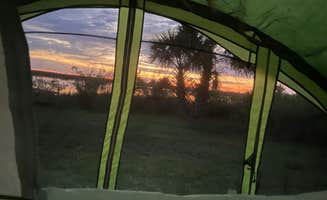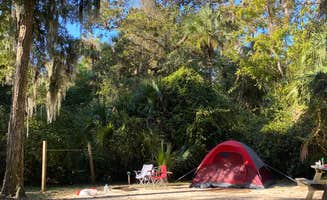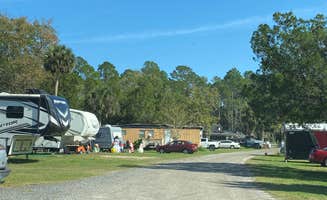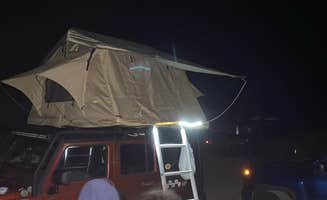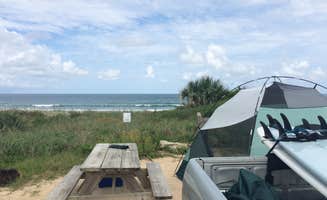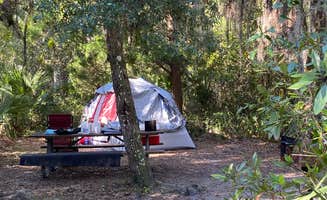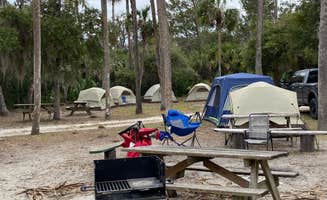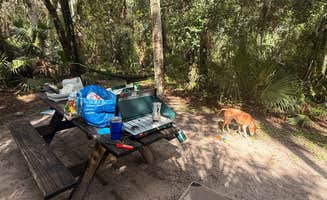Palm Coast camping areas span both coastal and inland environments with temperatures averaging 70-90°F in summer and 50-70°F in winter. Annual rainfall of 52 inches is concentrated from June through September, with afternoon thunderstorms common during summer months. The area sits at just 10 feet above sea level, making some campsites susceptible to seasonal flooding during heavy rainfall.
What to do
Paddling and kayaking opportunities: Anastasia State Park offers watercraft exploration along protected waterways. "From kayak rentals to live music, you don't want to miss this lovely state park. Try hiking to the Amphitheater or check out the old coquina quarry," notes Amelia W., highlighting the diverse water activities available beyond just swimming.
Cycling on beach trails: The packed sand at multiple beaches allows for fat-tire biking during low tide. "I enjoyed riding bikes around the different campgrounds," shares Jordan S. from Anastasia State Park, pointing out that cycling paths connect various beach access points.
Historic explorations: Within 20 minutes of most coastal campgrounds, visitors can explore Spanish colonial sites. "Close and far enough from some outings that provide live music," writes Issa F. about Anastasia State Park, referencing its proximity to historical attractions while maintaining a natural setting.
Bird watching at wildlife preserves: Princess Place Preserve features designated observation areas for spotting native and migratory birds. "There's an Eagles Nest Viewing Area," mentions Tina M., who explored the preserve's 2.5-mile Hominy Trail with multiple bird watching stations.
What campers like
Privacy between sites: Vegetation barriers at many campgrounds create secluded camping experiences. "These campsites offer a serene amount of privacy with the space the campgrounds are working with. The foliage and large campsites provide a lot of privacy throughout the day and night," says Issa F. about Anastasia State Park.
Access to multiple water environments: Riverside Camping at Gamble Rogers offers both ocean and river options within walking distance. "Stayed at both the beach side and river side. Both are excellent. Beach side is right on the beach with several access points," explains Chris C., highlighting the dual-water experience.
Abundant wildlife viewing: Many campsites offer opportunities to observe local fauna from your site. "We saw deer every day on the long winding road to the state park," shares Debi M. about her stay at Faver-Dykes State Park, emphasizing the natural surroundings.
Clean facilities: Tomoka State Park maintains well-kept restrooms and showers. "Sites were plenty big enough. Bathrooms were clean. Park had places to ride bikes. Had a nice camp store that had just about anything you could need on a camping trip," notes Missi S., appreciating the campground amenities.
What you should know
Reservation requirements: Most oceanfront sites book 6-11 months in advance, especially during winter. "This was an easy park to get our motorhome into. The sandy road was a little bumpy in some areas but mostly smooth. The sites are wide and because of the vegetation almost impossible to see your neighbors," explains Brandie B. about Faver-Dykes State Park.
Insect precautions: No-see-ums and ticks are prevalent, particularly after rainfall. "Left park after one night because of ticks. There were tick warning signs posted," warns Annell N. about Faver-Dykes State Park, suggesting campers should bring appropriate repellent.
Water considerations: Princess Place Preserve and some other sites have limited potable water. "It is primitive camping. Water is non-potable so bring plenty," cautions Aida K. about Princess Place Preserve.
Road conditions: Some parks have sandy or unpaved access roads that can be challenging after rain. "The road isn't paved and can be quite bumpy during/after rain. I recommend bringing a bike to get around," advises Kelly R. about Tomoka State Park.
Tips for camping with families
Beach safety awareness: Rip currents affect some beach areas, requiring supervision for children. "Anastasia State park is a wonderfully relaxing state park. The beach is very clean and scenic. But beware because we did encounter a Portuguese Man O' War, but the park ranger was able to safely remove it," cautions Jordan S., highlighting both the beauty and potential hazards.
Educational opportunities: Beachside Camping at Gamble Rogers offers turtle nesting observation during summer months. "We got to see some whales and dolphins. They have fire rings and wood to buy pretty cheap," shares Corey L., noting the wildlife viewing opportunities beyond just the beach.
Playground accessibility: Some campgrounds feature play areas within sight of campsites. "We have site 33 which is amazing to let the kids play, you can see the playground but still have some privacy from it," explains Kat G. from Anastasia State Park.
Weather preparation: Afternoon thunderstorms are common in summer, requiring flexible activity planning. "In 50,000 miles on the road, I have never seen a cleaner shower room facility. I even used their shower facilities," notes Kevin H. about Riverside Camping at Gamble Rogers, highlighting the importance of having clean indoor facilities during inclement weather.
Tips from RVers
Site selection for size constraints: Beverly Beach Camptown RV Resort and other oceanfront locations have varying site dimensions. "This is a no thrills over priced campground on the beach. The spots are very close to each other and the power pedestal is a plug only (no breaker). It's an older campground that needs to be updated," advises Bill B., suggesting careful research before booking.
Full hookup availability: Most state parks offer water and electric only, while private campgrounds provide sewer connections. "Beverly beach puts you and your RV feet away from the Atlantic Ocean. They have options for many different budgets from deluxe oceanfront to cheaper sites that are across the street," explains Keith and Tia S., noting the range of hookup options.
Shade considerations: Tree coverage varies significantly between oceanfront and inland sites. "We loved how private our site felt within the big oak trees, but we noticed they had a lot of other sites that weren't as private," observes Kasey M. about Bulow RV Resort, highlighting the importance of researching specific sites within a campground.
Length restrictions: Several campgrounds limit RV size, particularly on the oceanfront. "Nice state park close to St Augustine. Large campsite with privacy," notes Christian D. about Anastasia State Park, where maximum length is 38 feet according to another reviewer.



